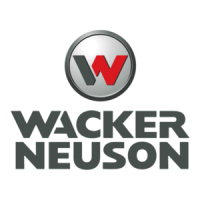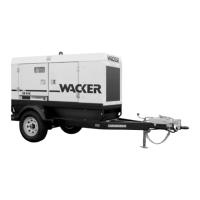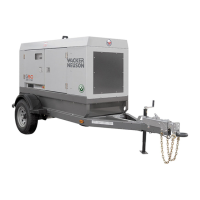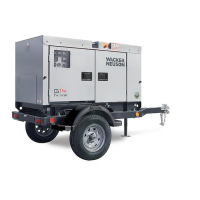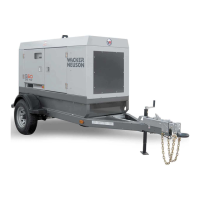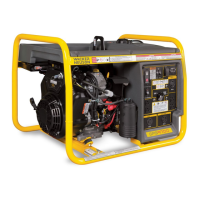wc_tx003111gb_FM10.fm
190
User’s Information for Transport Canada Fuel Tank
21 User’s Information for Transport Canada Fuel Tank
Note: The following information applies ONLY to machines equipped with a
Transport Canada fuel tank. This type of fuel tank is required for machines
transported on Canadian roads. Contact your Wacker Neuson dealer if you are
unsure about whether or not your machine is approved for use in Canada.
Description
The fuel tank, or Intermediate Bulk Container (IBC), on this machine was designed
for the storage and transportation of diesel fuel when mounted on a mobile electric
power source as a sub-base tank.
The fuel tank was manufactured using ductile steel which meets or exceeds United
Nations specifications (eg. CGSB 43-146-2002 in Canada). It has been tested and
certified as UN Standard Mobile IBC, 31A/Y Packing Group II and III. This is an
international standard recognized by the Canadian Transportation of Dangerous
Goods Act (TDG), and it applies to tanks either made in Canada or imported (TDG
Regs. 5.6(b)).
The fuel tank is equipped with a pressure / vacuum relief venting device set to 2 psi
(14 kPa) pressure and 0.25 psi (1.75 kPa) vacuum.
General
requirements
■ Do not fill above 95% maximum capacity of the fuel tank.
■ All valves and plugs must be closed while the machine is being transported.
Placarding
requirements
Immediately after the fuel tank is filled (fully or partially) with flammable liquids, UN
Placards / Transport of Dangerous Goods Decals / Placards of Flammable Liquids
(Transport Canada - Product Identification Decals) must be installed prior to
moving the machine in any manner. This is a requirement of Transport Canada.
Refer to “Hazardous Materials Placards” in the Operation chapter for instructions
on how to install the placards.
Maintaining
the fuel tank
■ The fuel tank must not be lifted or moved with any fuel inside. Drain the fuel tank
completely and remove external hardware before relocating the tank for
inspection or maintenance.
■ Do not drill into, or weld anything onto, the fuel tank.
■ Inspect the exterior paint annually for chips or scratches. Repair any damage
using compatible paint.
■ Replacement of damaged components or parts must be of the same
specification or equivalent. Replacement parts can be obtained directly from
Wacker Neuson or from an authorized Wacker Neuson service center.
Compulsory
inspections
Transport of Dangerous Goods / Transport Canada regulations require the fuel
tank to be leak tested and inspected every 5 years (60 months) at a certified facility.
A list of testing facilities in Canada certified to perform leak tests and inspections
can be found at the Transport Canada website:
http://www.tc.gc.ca/tdg/containers/ibc_leak/ibcleak.asp
The following pages contain forms for you to record tank inspection and testing
results. Copy the pages as needed.

